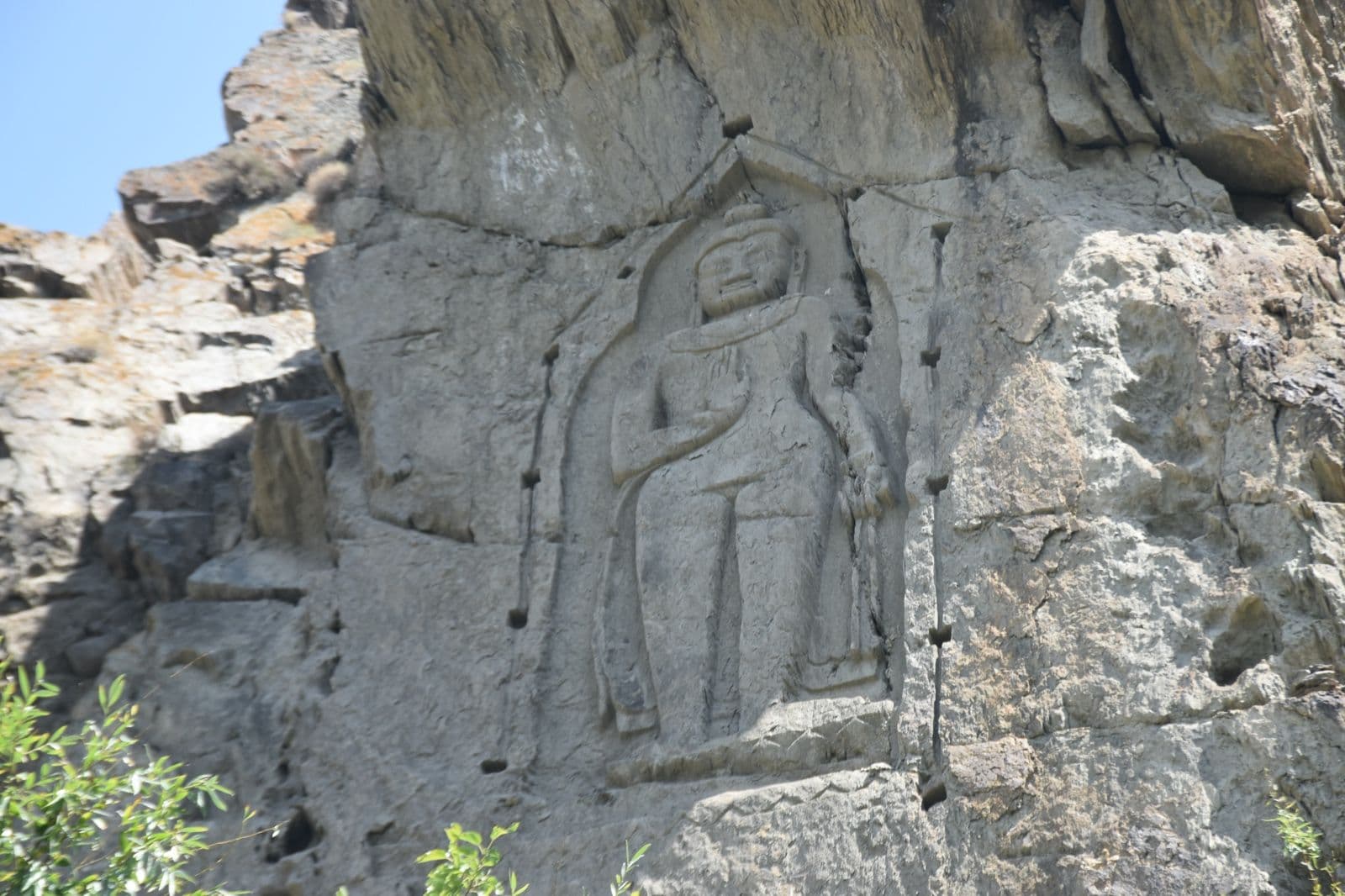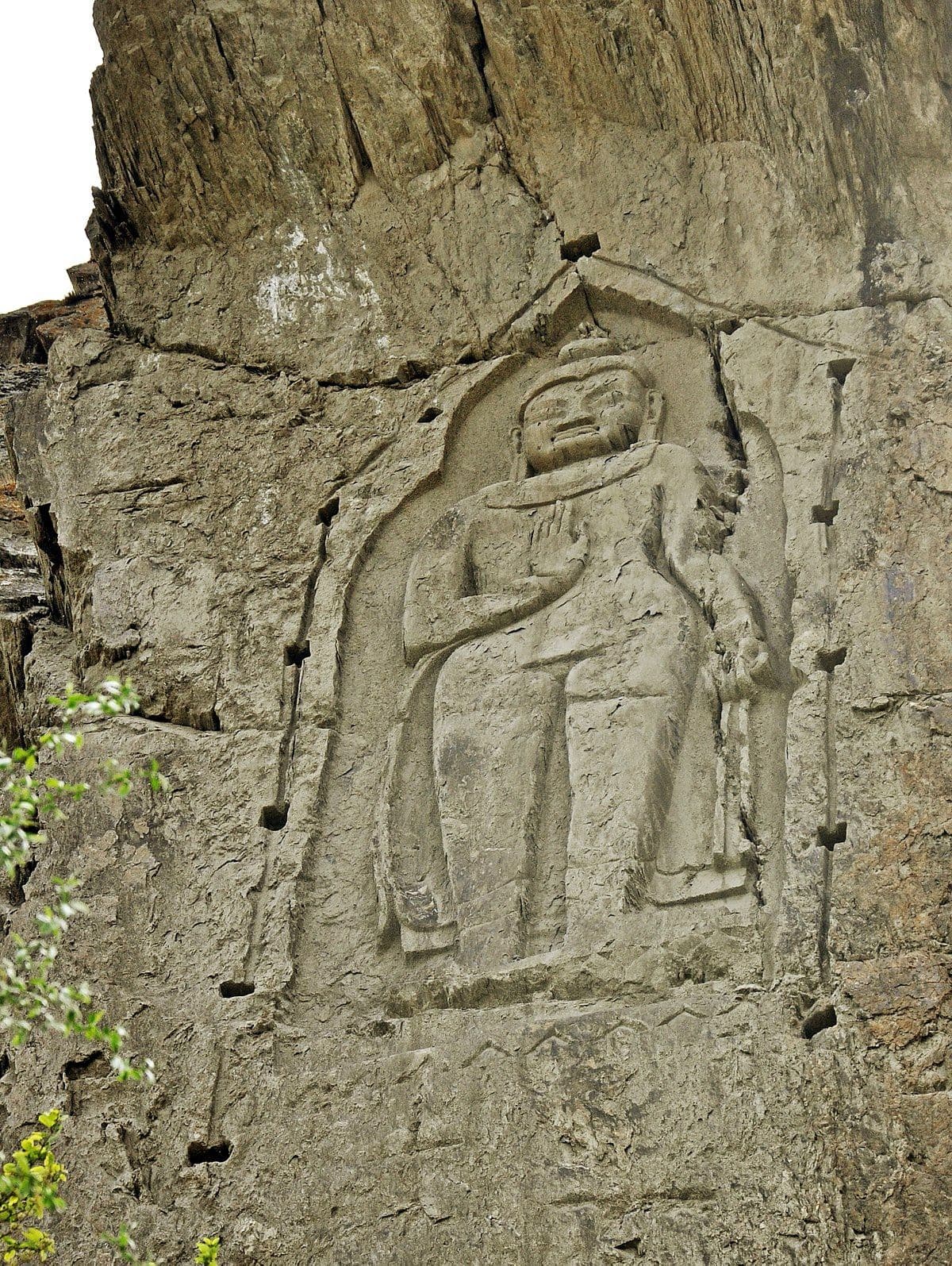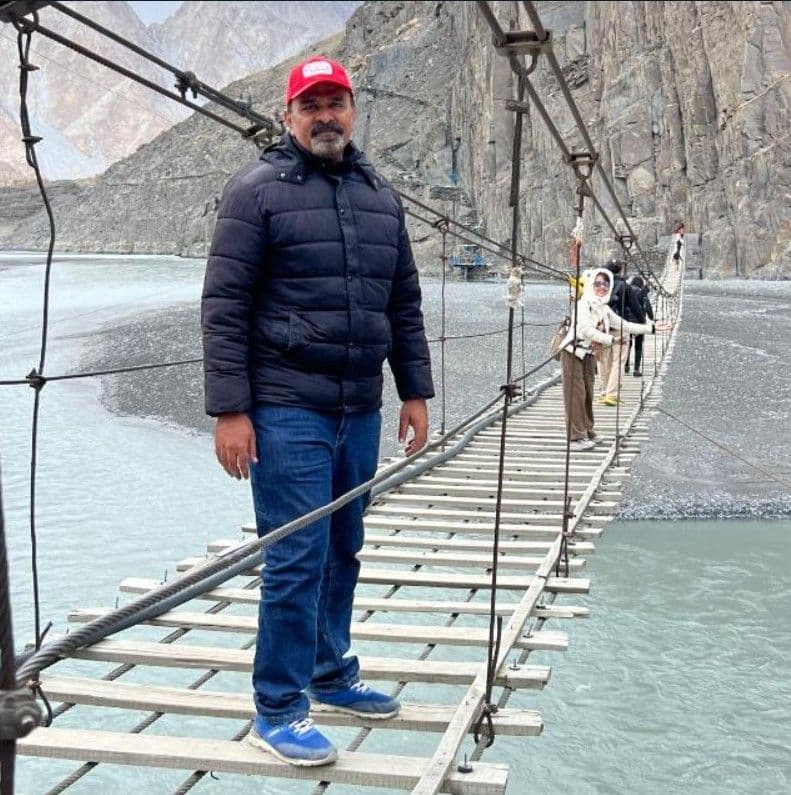
Introduction
The Kargha Buddha Trail is an extraordinary walk that blends nature, culture, and spirituality. For international travelers seeking off-the-beaten-path experiences in South Asia, this hike offers an unforgettable glimpse into the ancient Buddhist heritage of the region.
Starting at the serene Serena Hotel Gilgit, this adventure leads you through the Mughal Shikari Trail, an age-old path historically used by hunters and travelers during the Mughal era, ultimately arriving at the awe-inspiring Kargha Buddha, a 7th-century rock carving etched into a cliff face.
Whether you’re from the USA, UK, Germany, France, Italy, Japan, Singapore, Poland, or Spain, this trail promises scenic beauty, cultural immersion, and a peaceful connection to the past.
Starting Point: Serena Hotel Gilgit
Coordinates: 35.9225° N, 74.3001° E
Serena Hotel Gilgit is the ideal base for your journey. Located just 15 minutes from Gilgit Airport, the hotel combines modern luxury with traditional charm. You can rest, acclimate, and prepare for your hike while enjoying exceptional views of the surrounding Karakoram Mountains.
Recommended: Spend one night at Serena before beginning your hike to ensure you’re well-rested and adjusted to the altitude (~1,500 meters).

Route Overview
Trail Name: Kargha Buddha Trail via Mughal Shikari Trail
Distance: Approx. 8–10 km round trip
Duration: 3–4 hours (moderate pace)
Difficulty Level: Moderate (some rocky terrain)
Altitude Gain: ~400 meters
Trail Type: Loop / Out-and-back
Ideal Seasons: March–June & September–October
Language Tip: English is understood in tourist areas, but basic Urdu phrases and respectful greetings in local Shina will be appreciated.
The Trail: Step-by-step guide
1. Departure from Serena Hotel Gilgit
Begin early in the morning, around 7:00 AM, to enjoy cooler temperatures and the morning light on the mountains. From the hotel, arrange a short drive (or guided walk) to the trailhead of the Mughal Shikari Trail, located west of Gilgit city center, near the traditional Shina villages of Nomal and Napura.
Cultural Tip: Greet locals with a respectful "Assalamu Alaikum" (peace be upon you). Many are happy to share local legends about the trail.
2. Walking the Mughal Shikari Trail
The Mughal Shikari Trail is believed to have been used by royal hunting parties during the Mughal dynasty. You'll walk along paths that wind through forested hills and across crystal-clear streams, with panoramic views of the Gilgit Valley and Karakoram peaks like Rakaposhi in the distance.
What to Look For:
Native flora like wild mulberry trees
Himalayan wildlife such as markhor (wild goats), golden eagles, and marmots
Stone relics or ancient rest spots once used by hunters

3. Arrival at Kargha Buddha
After approximately 1.5–2 hours of hiking, you’ll arrive at the Kargha Buddha, a towering 15-foot (approximately 7-meter) rock carving of the Buddha dating back to the 7th century CE.
Historical Significance:
The carving is a testament to the spread of Buddhism along the Silk Road.
Nearby caves are believed to have been used by monks for meditation.
The Buddha is carved in a style reminiscent of Gandhara art, influenced by Hellenistic and Indian aesthetics.
Take Time to Reflect: This is an ideal spot for quiet meditation or photography. There is a small rest area and local tea vendors nearby.
4. Return Journey
You can either retrace your steps via the Mughal Trail or loop through a gentle downhill path that brings you back to the road, where a pre-arranged vehicle or guide can take you back to Serena Hotel.
What to Pack
Lightweight hiking boots or shoes with good grip
Daypack with water (1–2 liters), snacks, and sunscreen
Camera or smartphone for photos
Hat and sunglasses
Light windbreaker or fleece (especially in early spring or fall)
Respectful attire (avoid shorts or tank tops—long pants and sleeves preferred)
Small first-aid kit and insect repellent
Tips for Photographers
Early morning light enhances the golden hues of the Buddha carving.
Wide-angle shots work best for capturing the cliff and valley together.
Drones are not permitted without prior permission from local authorities.
Guided vs. Independent Hike
Guided Option: Recommended for first-time visitors. Local guides offer cultural insights, handle navigation, and enhance safety.
Independent Option: Suitable for experienced hikers with offline maps (e.g., Maps.me or Gaia GPS) and basic knowledge of local customs.
You can arrange guides and permits through the concierge at Serena Hotel or local tour agencies such as:
Saiyah Travels
Safety and Responsible Tourism
Stay on marked trails to prevent erosion and respect private property.
Don’t touch or climb the Buddha carving—it's a protected heritage site.
Take all trash with you—leave no trace.
Support local vendors and artisans where possible.
Connectivity and Essentials
SIM Cards: Available at Gilgit Airport or city center (Telenor and Zong work best in the region).
Wi-Fi: Available at Serena Hotel, limited on trail.
Currency: Pakistani Rupee (PKR). Carry some cash; ATMs may be limited in Gilgit.
Final Thoughts
The Kargha Buddha Trail is more than a hike—it’s a journey through time. From your comfortable base at Serena Hotel Gilgit to the silent gaze of the ancient Buddha, every step tells a story of Silk Road travelers, Mughal royalty, and Buddhist monks who once roamed this land.
If you’re an international traveler looking for cultural depth, natural splendor, and meaningful adventure, this trail is a hidden gem in Pakistan’s rich tapestry of heritage.

